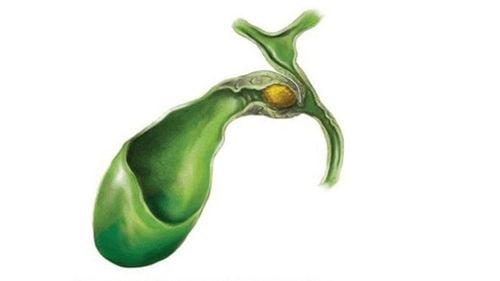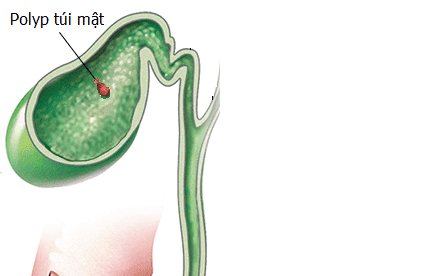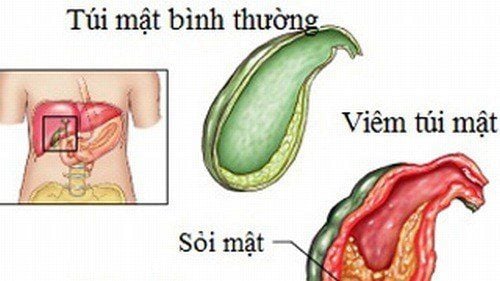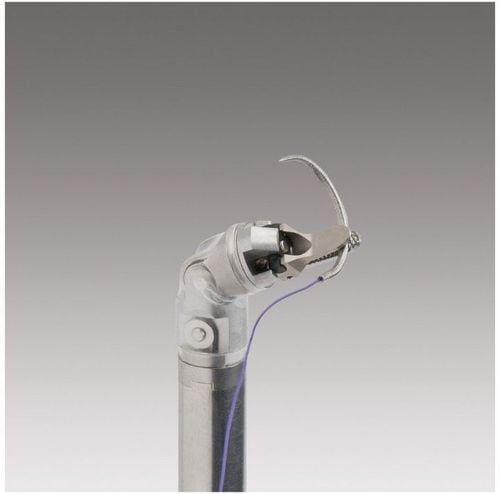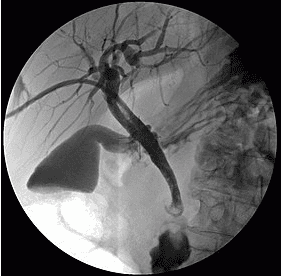This is an automatically translated article.
The article was professionally consulted with Master, Specialist Doctor II Phan Thi Minh Huong - Gastroenterologist - Department of Examination & Internal Medicine - Vinmec Danang International General Hospital.Gallbladder tumor is a type of gallbladder polyp, also known as a papilloma, on the surface of the gallbladder gland. This is a tumor-like or pseudotumor lesion appearing on the mucosal surface of the gallbladder. Gallbladder tumors are quite common and can occur at any age.
Benign gallbladder tumors develop in the lumen of the gallbladder and are benign in 92% of cases. 8% of cases are malignant gallbladder tumors, including gallbladder cancer, melanoma adenocarcinoma, cancer metastasis... The rate of gallbladder tumor or gallbladder polyp in the community accounts for 0, 03-9% and less common than gallstones, usually with a high prevalence in women aged 30-50 years. The size and number of gallbladder tumors vary, but the common size is less than 10mm. Patients can have many tumors in the gallbladder, which can be larger than 20-40 mm, in some cases there are both gallbladder tumors and gallstones.
1. Causes of Benign Gallbladder Tumors
The formation of benign gallbladder tumors is caused by many different causes, such as: poor hepatobiliary function, blood sugar levels, high blood fat, obese patients, unscientific eating habits, etc. Hepatitis virus infection ... Most of the gallbladder tumors are formed due to the main cause of unhealthy eating habits such as eating a lot of fat, which increases blood sugar and blood fat, causing the liver and gallbladder to work too hard. , poor functionality causes many problems here.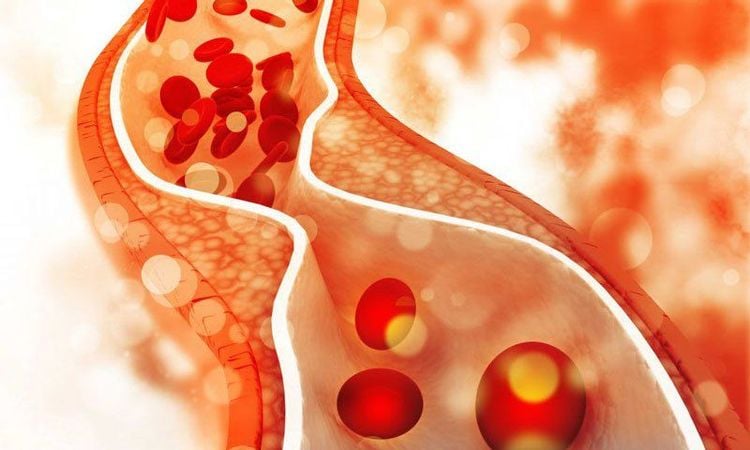
Phần lớn u túi mật hình thành do thói quen ăn uống không lành mạnh làm tăng lượng đường trong máu, mỡ máu
2. Manifestations of gallbladder tumor
Most cases of gallbladder tumors have no specific symptoms, and gallbladder polyps and tumors are often detected during a general physical examination or other medical examinations. Only 6-7% of patients with benign gallbladder tumors have clinical symptoms such as pain in the right lower quadrant, pain in the upper umbilicus, some accompanying symptoms such as nausea, vomiting, slow eating, dyspepsia, and spasticity. below the right flank.3. Method of diagnosing gallbladder tumor
In order to accurately determine the status of gallbladder tumor, the patient needs to perform the paraclinical indications according to the doctor's words. Thereby, it is possible to accurately assess the tumor status in the gallbladder.Accordingly, the patient needs to perform the following paraclinical tests:
Abdominal ultrasound: showing gallbladder polyps, determining the location, size and shape of the gallbladder tumor. Besides, ultrasound also helps to monitor the growth of tumors to have appropriate and timely treatment orientation. With the ultrasound method, the diagnosis rate of gallbladder tumors is more than 90% accurate, and it can also evaluate other intra-abdominal lesions. Oral contrast-enhanced cholangiography shows that the gallbladder tumor is a contrast defect in the gallbladder after enhancement. Endoscopic retrograde cholangiopancreatography: is a rarely used method, usually applied only when ultrasound of the biliary tract does not detect abnormalities. CT scan: applied when the gallbladder tumor is at risk of being malignant, the polyp lesion image shown in the CT scan is an increased density protrusion in the gallbladder. Contrast-enhanced CT scans are 90% accurate in the diagnosis. Magnetic resonance imaging (MRI): indicated when polyp lesions are suspected of malignancy. Perform related biochemical tests including: liver function tests, kidney function tests, hepatitis B virus tests, C tests, markers of cancer such as CEA, CA 19-9 ... After performing the paraclinical tests For the diagnosis of gallbladder tumors, it is very rare for a benign gallbladder tumor to develop into a malignancy, but it is still possible. When gallbladder tumors become malignant, they will have more recognizable features. Accordingly, the case of abnormal polyps, capable of developing into malignancies such as:
Polyps with broad legs, without stalks Tumor size larger than 10mm Polyp with small size growing into large clusters Polyp overgrowth , abnormally fast, spreading in number and size People with polyps over the age of 50 U have obvious symptoms and often have cholecystitis Patients with sclerosing cholangitis have gallbladder polyps.

Để xác định chính xác tình trạng u túi mật, người bệnh cần thực hiện các chỉ định cận lâm sàng theo lời của bác sĩ khám
4. Treatment of benign gallbladder tumors
Most gallbladder tumors are benign, so patients can live peacefully without the need for resection or special treatment. Because the gallbladder is made up of a system of bile ducts, which can regulate bile secretion and food digestion, it cannot be arbitrarily removed without a doctor's prescription in each specific case. The pictures show that the malignant gallbladder tumor will be indicated by the doctor for surgery to remove the suitable gallbladder.Therefore, people with benign gallbladder tumors should be monitored periodically for their tumor status at least once every 6 months to know the development status of the tumor, have timely treatment if the tumor develops into a malignant one. . Especially for the case of gallbladder tumor in the age older than 50 years. In particular, patients with benign gallbladder tumors need to have healthy diet changes. Specifically, patients need to eat foods rich in fiber, low in sugar, low in fat, and regularly exercise to help reduce and prevent tumor growth in the gallbladder.
Please dial HOTLINE for more information or register for an appointment HERE. Download MyVinmec app to make appointments faster and to manage your bookings easily.




